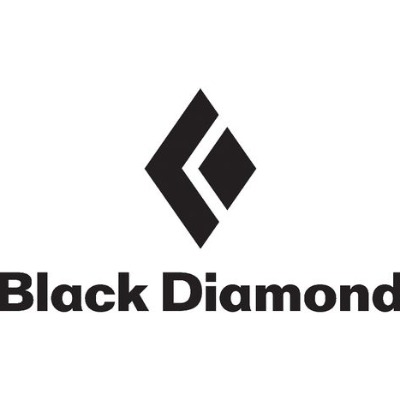Destimetrics - Cooling Rates Spark Strongest Bookings In A Year At Western Mountain Destinations

A very small tweak in aggregated rates over the past 30 days created an appreciable uptake in occupancy for most of the summer months in a notable pattern shift from the previous six months. The positive news for both lodging properties and consumers was released yesterday by DestiMetrics,* the Business Intelligence division of Inntopia, in their monthly Market Briefing. The strongest booking pace in more than a year along with a return to more predictable pre-pandemic patterns for day-of-the week arrivals were other notable findings in the most recent data collected through May 31 from 17 western mountain destinations.
May revved up; with the exception of Memorial Day
Compared to last year, occupancy for the month was up 8.3 percent compared to last May with the Average Daily Rate (ADR) for the month up 4.4 percent and when combined, revenues for the month were up 13.1 percent. The only downturn was for the three-day holiday weekend from May 25-27 that posted a 2.2 percent dip in occupancy.
Summer picks up the pace
Occupancy for the full six months of summer is up 3.8 percent in a year-over-year comparison to last year at this time with gains being posted in five of the six months and only October showing a decline. And after several years of steadily climbing rates, sometimes significantly, ADR is up only a moderate 1.8 percent compared to last summer with increases in five of the six months with July the only month posting a decline—down 1.1 percent compared to last year. However, that 1.8 percent seasonal rate gain is a notable decline from one month ago when the year-over-year ADR comparison was 4.3 percent. That subtle dip in daily rates is being credited with the uptick in occupancy and the increase in occupancy and rates is delivering aggregated revenues that are up 5.8 percent over last summer.
“What a difference a month can make,” observed Tom Foley, senior vice president for Business Intelligence at Inntopia. “One month ago, we were tracking flat or declining occupancy levels, daily rates that were outpacing inflation, and a virtually flat booking pace compared to the previous April,” he continued. “But in the past 30 days, we saw lodging properties ease back on room rates, just enough to keep them above flat but below inflation, and that has created the incentive for travelers to ramp up their bookings. The result we’re seeing is a healthy gain in occupancy that is boosting revenues for lodging properties.
Lively booking pace moved the needle
Bookings made during May for arrivals from May through October led to a very strong 26.5 percent gain in the May booking pace volume compared to May 2023, the strongest booking pace recorded since May 2022. Increased bookings were recorded for all summer months ranging from a 9.3 percent gain in bookings for September arrivals to a 48.5 percent gain in bookings for October arrivals.
Economic indicators somewhat mixed in May
The most closely-watched and vital economic statistic this month was the Consumer Price Index (CPI) report released yesterday. The National Inflation Rate declined for the second consecutive month during May from 3.4 to 3.3 percent, and overall prices were unchanged from April. This is the first time that prices have remained stable month-over-month since October 2023. And the employment data from the Bureau of Labor Statistics indicated that wages increased 4.1 percent during May based on annual measurements and this combination of good news has the potential for a positive consumer response in the coming weeks. These two figures are credited with playing a role in May’s robust booking pace.
After a rough ride back in April, the Dow Jones Industrial Average (DJIA) mounted a recovery in May by adding more than 870 points to rise 2.3 percent. In the midst of this mercurial month, the DJIA managed to set the single all-time high close at just over 40,000 points for the first time ever on May 17—before retreating by the end of the month to 38,686.32 points.
The Consumer Confidence Index (CCI) and the Consumer Sentiment Index (CSI) moved in separate directions in May with the CCI edging up and the CSI moving down. The CCI rose 4.6 percent to reach 102 points and marking the first gain in the index since January although consumers have remained concerned about persistent inflation. Easing food and grocery prices was credited with the improved outlook although respondents continue to expect higher interest rates in the months ahead. In contrast, the University of Michigan’s CSI declined a notable 8.1 points to reach its lowest level since last November and reflects concerns about the labor markets as unemployment is expected to tick up while income growth is expected to slow.
Once again, the National Unemployment Rate edged up from 3.9 percent to four percent to reach its highest level since January 2022. The biggest surprise was the unexpectedly large number of new jobs created—272,000 which was far in excess of forecasts and suggests that the job market is still a negative factor as the Federal Reserve Bank considers whether to start easing interest rates in the near future. The Leisure & Hospitality sector added a very strong 42,000 new jobs last month to surpass their 12-month average with 17,000 of those positions in the Accommodations sub-sector–allowing lodging properties to move towards a higher capacity for occupancy with a larger workforce.
“We can’t overstate the importance that markets play in summer booking patterns for mountain destinations,” notes Foley. “When snow isn’t part of the equation–in other words, summer-–consumers think differently about what is or isn’t an incentive. With consumer confidence firmly in the doldrums for the last two years, mostly because of prices, the lower inflation and steady prices this month are likely to combine with the higher wages to help boost spending on travel,” he suggested. “We’ve seen some of that occur in May with just a modest rate adjustment, and some support for consumers can go a long way to making a season thrive.”
Keeping an eye on...
*Summer occupancy gains grew considerably—since the April 30 Market Briefing, summer occupancy rose from being up a slight 0.1 percent for the full summer to being up 3.8 percent in a year-over-year comparison.
*Softening approach to daily rates—consumers have been rate-sensitive since mid-2022 driven largely by the persistent inflation so lodging suppliers at mountain destinations have been pulling back on rate increases in the past 30 days which has triggered a healthy uptick in demand.
*Arrival day of the week is reverting to pre-pandemic patterns—as return-to-office policies are implemented across many sectors of the economy. Work-from-home policies have gradually been shifting back to the more typical work-week schedule and as a result, arrival date bookings are also shifting driven by these new office policies along with the attraction of non-weekend rate pricing. However, midweek stays are still higher than they were in 2019 and most of the shift is occurring with Friday arrivals, which have moved to Sundays.
“Summer is looking much better as of May 31 than the end of April and a seemingly small adjustment to room rates has driven strong bookings and taken the summer from essentially flat to showing some healthy increases,” explained Foley. “Looking ahead, concerns about western wildfires are much lower than in recent years and the economy, particularly inflation news, is heading in the right direction. With the potential of easing interest rates, the crucial pieces for a successful summer are starting to fall into place,” he concluded.













